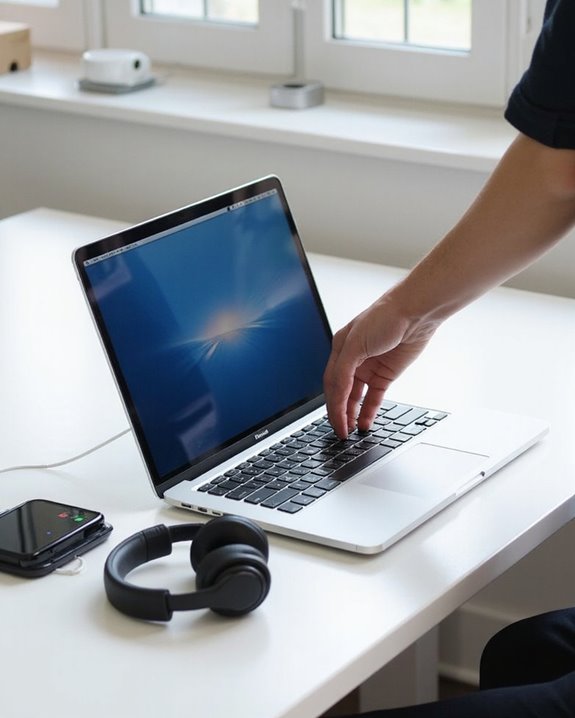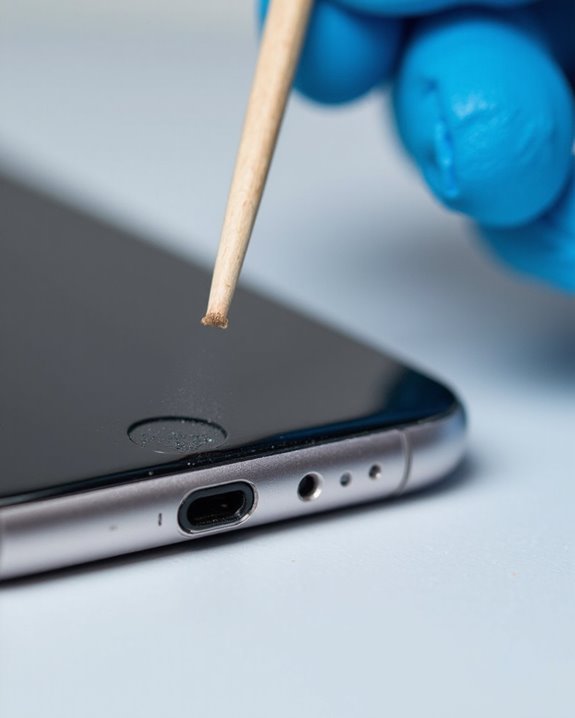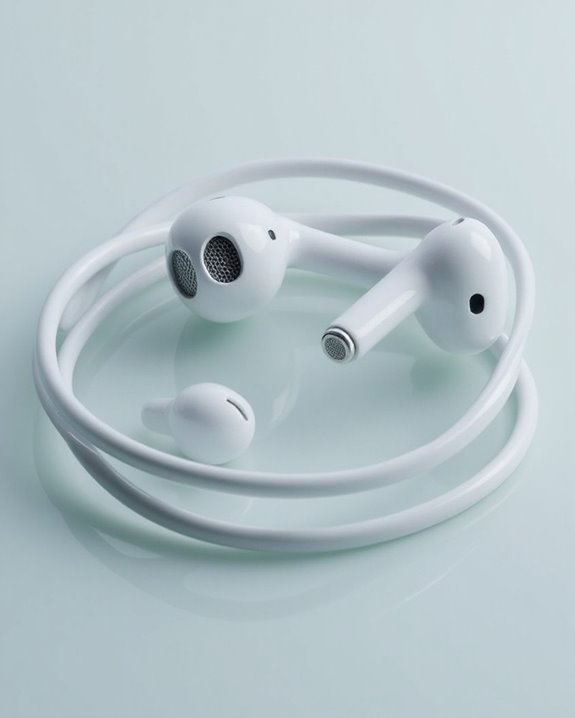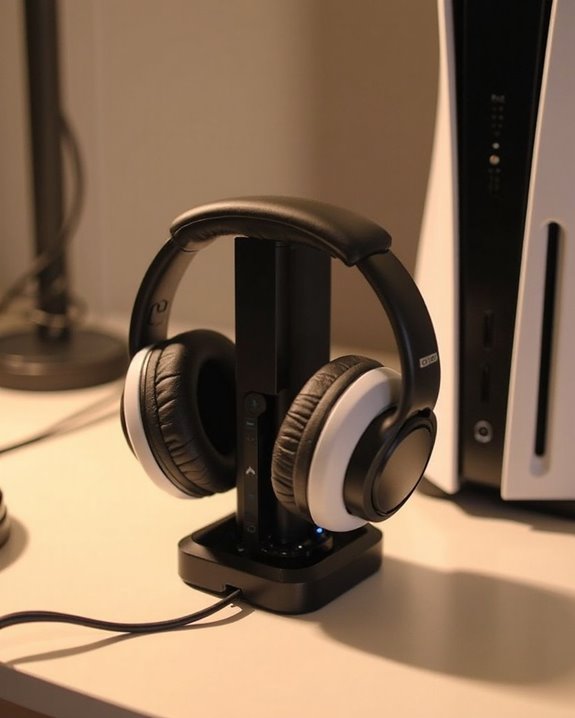Connecting headphones to a MacBook varies by model and headphone type. For wired options, plug directly into the 3.5mm headphone jack or use a USB-C adapter for newer models. Bluetooth headphones require pairing through System Settings > Bluetooth while in discoverable mode. Once connected, select your headphones as the output device in Sound preferences. Adjust audio quality through Audio MIDI Setup for best sound. The following guide covers each connection method with troubleshooting techniques for common issues.
Key Takeaways
- For 3.5mm wired headphones, simply plug directly into the headphone jack on your MacBook.
- Connect USB-C headphones to newer MacBook models via Thunderbolt 4 ports or use a USB-C adapter for traditional headphones.
- For Bluetooth headphones, put them in pairing mode, then connect through System Settings > Bluetooth on your Mac.
- After connecting, select your headphones as the output device in System Settings > Sound.
- If connection fails, restart both devices, check for physical obstructions, or reset Bluetooth module.
Understanding MacBook Headphone Connectivity Options
The modern MacBook lineup offers several distinct methods for connecting headphones, with options varying by model and release year. Apple’s Port History shows a shift from dedicated audio jacks to multi-function ports across their product range, though many models still retain the traditional 3.5mm headphone port.
Trend Analysis indicates MacBook Pro models (14-inch and 16-inch from 2021 onwards) feature Thunderbolt 4 ports supporting audio, video, and data simultaneously. These ports accommodate USB-C headphones and adapters for conventional headphones. Meanwhile, the 3.5mm headphone jack on many MacBooks provides advanced support for high-impedance headphones without requiring external amplification.
For models with USB-C/Thunderbolt ports only, users can connect headphones through adapters or select Bluetooth wireless options, which macOS seamlessly integrates for cable-free listening experiences. Additionally, many USB-C headphones come equipped with built-in DAC chips that ensure high-resolution audio quality when connected directly to compatible MacBooks.
Connecting Wired Headphones to Your MacBook
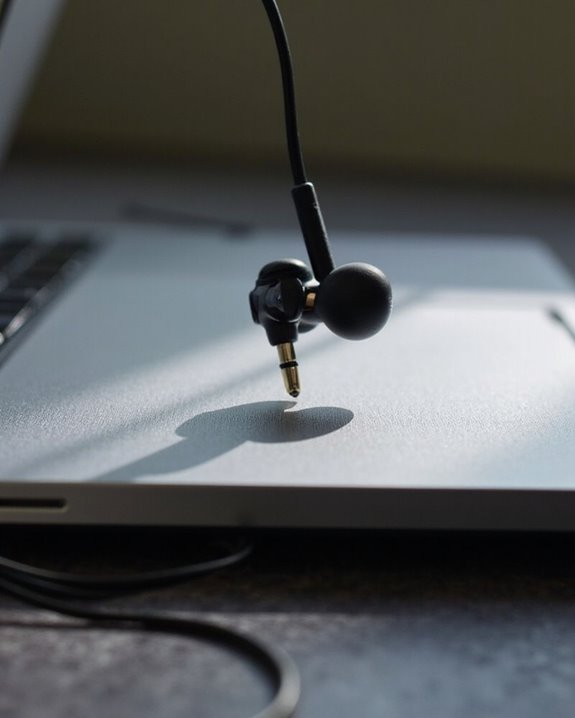
When connecting wired headphones to your MacBook, users need to identify which ports their specific model offers before proceeding with the setup process. Newer MacBook models typically require a USB-C to 3.5mm headphone jack adapter, while older versions and the M4 Mac Mini feature built-in headphone jacks.
For adapter-required models, simply connect the adapter to any available USB-C port, then plug the headphones into the adapter. Next, verify the connection by checking Sound preferences in System Settings to make sure headphones are selected as the output device.
Proper cable management prevents damage to both the adapter and headphone wires during use. Consider dedicated headphone storage solutions to maintain cable integrity when not in use, extending the lifespan of your audio equipment while avoiding tangled wires. USB headsets with plug-and-play USB setup offer a convenient alternative for clear audio without needing additional adapters.
Setting up Bluetooth Headphones With Your Macbook
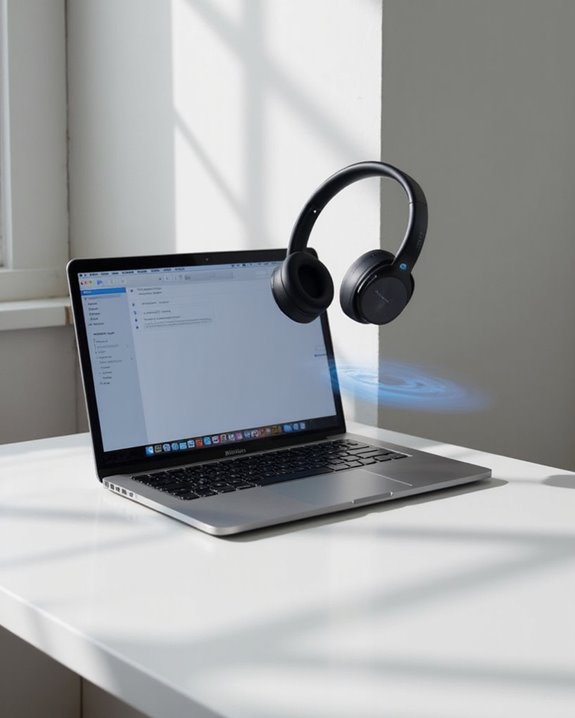
Connecting Bluetooth headphones to a MacBook provides wireless freedom while enjoying audio content without disturbing others nearby. The process requires placing headphones in discoverable mode, typically by holding the power button until an indicator light flashes.
Users should navigate to System Preferences or System Settings and select Bluetooth to begin pairing. Make sure the MacBook’s Bluetooth is activated and the headphones are within the 30-foot connectivity range. Battery monitoring is essential to prevent unexpected disconnections during use.
Regular firmware updates for both the MacBook and headphones help maintain ideal connectivity and resolve potential compatibility issues. If connection problems occur, users should check that the headphones aren’t paired with another device and restart the MacBook if necessary. For disconnection, select the device in Bluetooth settings and click “Forget” to prevent automatic reconnection.
Many advanced headphones now use Bluetooth 5.0 connectivity for improved range and stability during use.
Configuring Audio Settings for Optimal Sound Quality
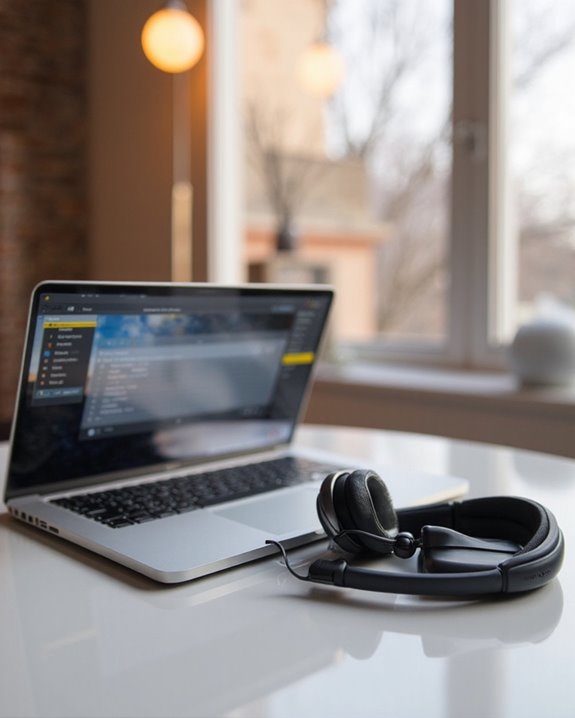
Once Bluetooth headphones are successfully connected to a MacBook, proper audio configuration becomes the next step toward an exceptional listening experience. Users should navigate to System Settings > Sound > Output to select their headphones as the primary output device and adjust volume levels accordingly.
For Audio Optimization, setting appropriate sample rates (44.1kHz or 48kHz) and bit depth (24-bit) in Audio MIDI Setup helps achieve balanced performance without system strain. Headphone Accommodations can amplify soft sounds and customize frequency responses to personal preferences.
Effective Resource Management includes disabling system animations through Accessibility settings and removing unnecessary startup items. Users should regularly update audio drivers and firmware for ideal compatibility. For professional audio work, adjusting buffer sizes (64-128 samples for recording, higher for mixing) minimizes latency while maintaining system stability.
Troubleshooting Common Headphone Connection Issues
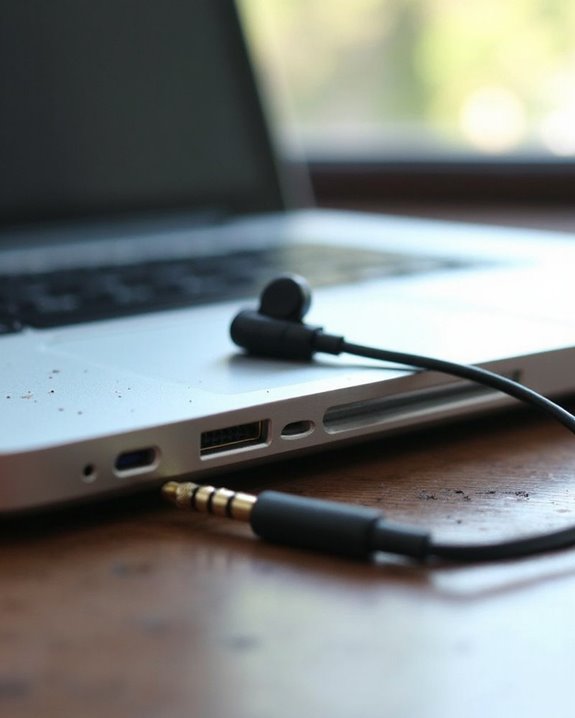
Despite their seamless design, MacBook headphone connections occasionally encounter frustrating issues that disrupt the audio experience. Users facing connection problems should first try a Device Restart for both the MacBook and headphones, which resolves many unexpected glitches.
For Bluetooth headphones not appearing in the connection menu, make sure they’re fully charged and in discoverable mode. Signal Interference from nearby electronic devices can cause audio dropouts or distortion, so relocating potential interference sources may improve performance.
Physical connections should be thoroughly inspected—make sure headphone jacks are fully inserted and ports are free of debris. For persistent Bluetooth issues, resetting the module via Terminal can be effective by running the command `sudo pkill bluetoothd` followed by a system restart.
If problems continue after these steps, check for software updates or contact technical support.
Using Multiple Headphones With Your Macbook Simultaneously
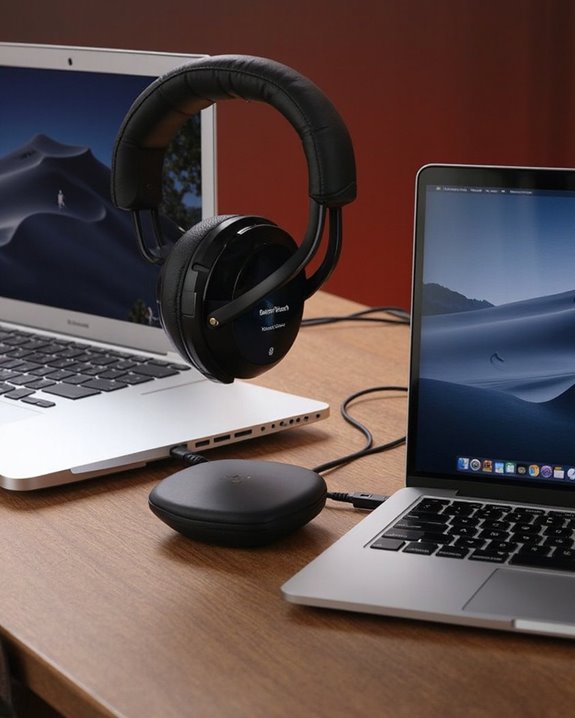
While resolving connection issues guarantees one headphone works properly, MacBook users often need to share audio with friends or colleagues. MacBooks support connecting multiple Bluetooth headphones simultaneously without requiring third-party applications, making Social Sharing seamless in quiet environments.
For Work Collaboration scenarios requiring audio monitoring, users can create a Multi-Output Device through Audio MIDI Setup. This native macOS tool combines audio streams to both wired and wireless headphones with synchronized playback. To set this up:
- Pair all Bluetooth headphones individually in System Settings
- Open Audio MIDI Setup from Applications > Utilities
- Create a Multi-Output Device by selecting the + button
- Check boxes next to all desired output devices
Remember that while volume must be controlled separately for each device, drift correction settings help maintain synchronized audio across different headphone types.
Frequently Asked Questions
Can I Connect My Macbook to a Home Theater System via Headphone Jack?
While 40% of users attempt it, a MacBook’s headphone jack isn’t ideal for theater connection without a proper jack adapter. The output is designed for headphones rather than the line-level input home theaters require.
Do Airpods Automatically Switch Between My Iphone and Macbook?
Yes, AirPods feature Automatic Switching between Apple devices signed into the same Apple ID. This Handoff Compatibility allows seamless switches between iPhone and MacBook when running iOS 14 and macOS Big Sur or later.
Will Using Wired Headphones Drain My Macbook Battery Faster?
Minimal drain, negligible impact, virtually unnoticeable difference. Wired headphones draw minimal power from MacBooks, causing substantially less Battery Drain compared to wireless options. Their Power Impact is considerably lower than screen brightness or processor-intensive tasks.
Can I Use My Macbook as a Headphone Amplifier?
Modern MacBooks do offer decent headphone amplification capabilities. They can drive high-impedance headphones (150-1000 ohms) with up to 3V RMS output, making audio boosting possible without external equipment for many headphone models.
How Do Noise-Cancelling Headphones Affect Macbook Microphone Performance During Calls?
Noise-cancelling headphones can sometimes cause audio interference during MacBook calls. The technology may amplify microphone input in certain applications, resulting in call distortion. Using alternative microphone settings can mitigate these issues.

